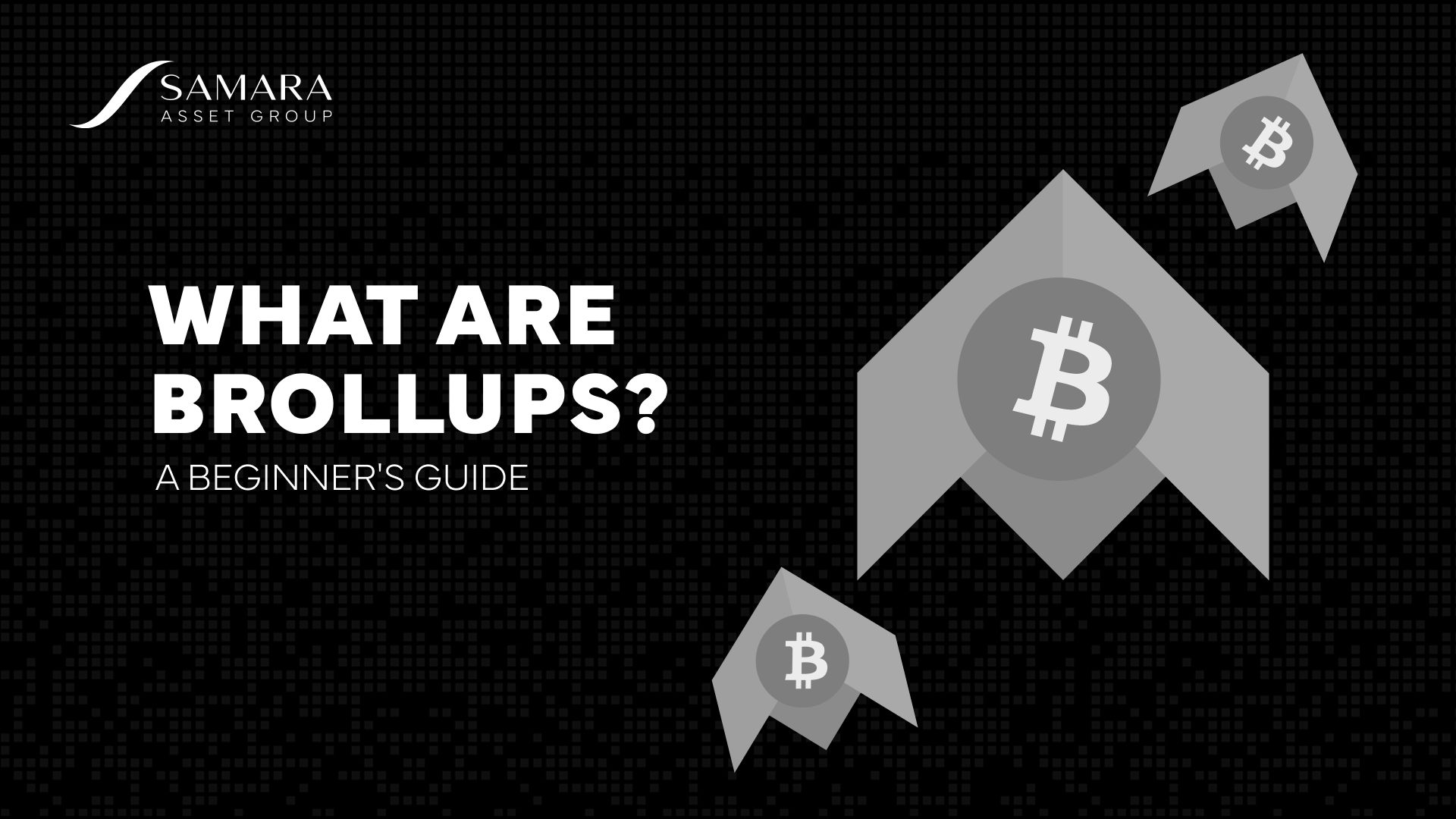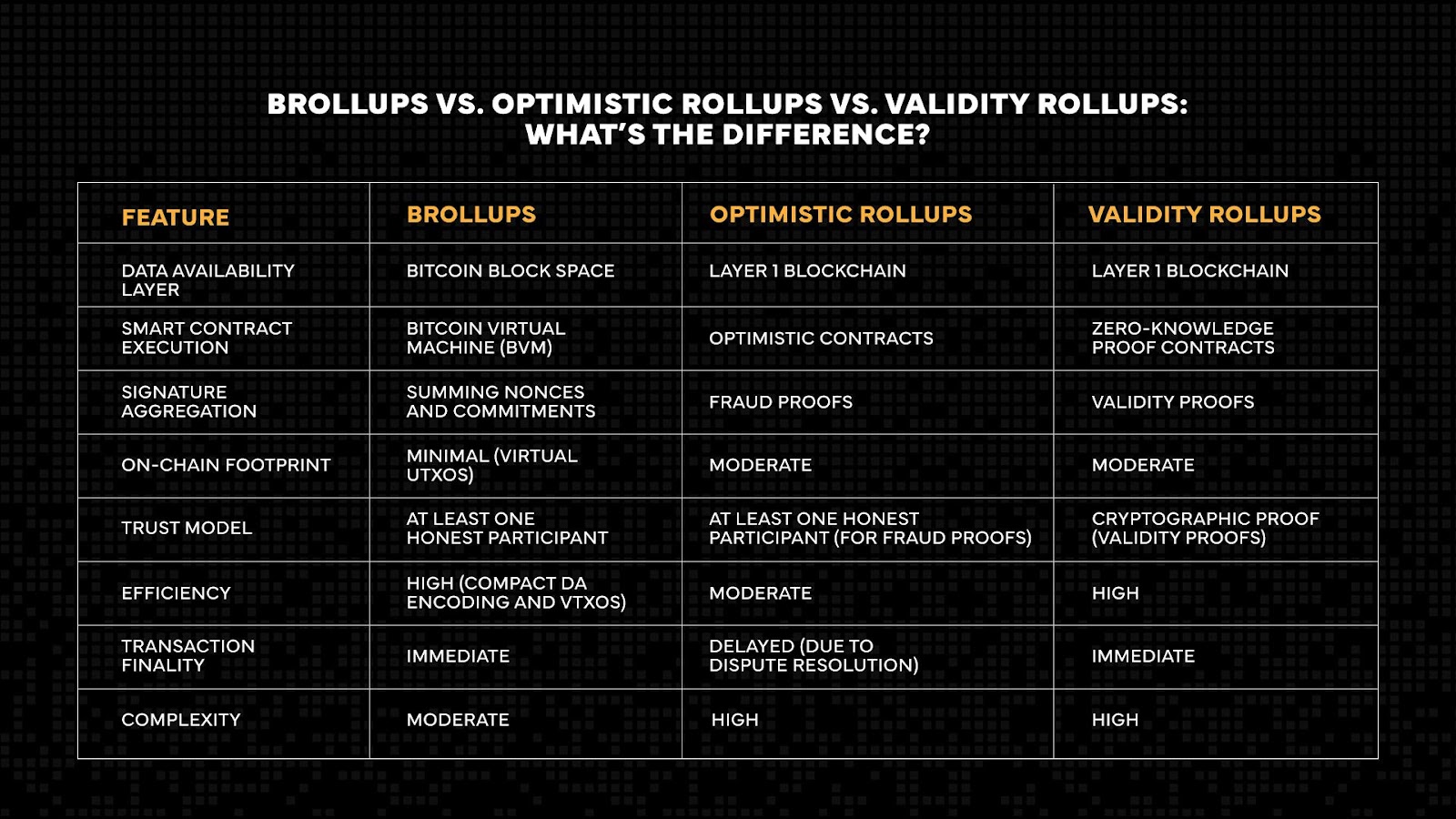Bitcoin
Bitcoin CPI
Venture Portfolio
Funds
Market Insights
Indicators
About
Contact

September 2, 2024





Over 15 years since its inception, Bitcoin’s scalability issues have spurred a wave of innovations to enhance the network’s capability. Brollups are one of these recent innovations to help scale Bitcoin.
Keep reading as we explain what Brollups are, how they work, and the merits and demerits of this innovation.
Brollups are a new form of Layer 2 scaling solution introduced for the Bitcoin network that intends to add new features to the network without altering the Bitcoin protocol or issuing new tokens.
Created by Bitcoin developer Burak, Brollups are tightly connected with Bitcoin and use its block space for data availability. They propose a new way of dealing with transactions using virtual UTXOs (VTXOs) as payables in smart contracts.
Brollups are currently in the design phase and are yet to be deployed on the Bitcoin mainnet. According to Burak, the testnet rollout may happen later this year.
Brollups function by using Bitcoin transactions to maintain their state, leveraging the Bitcoin Virtual Machine (BVM) to execute these transactions.
BVM is a theoretical construct designed to support the execution of smart contracts on the Bitcoin blockchain through Bitcoin rollups.
The key innovation is the use of VTXOs, which are virtual representations of UTXOs. These VTXOs are verifiable off-chain and enforceable on-chain, enabling you to use them in smart contracts without moving to a separate chain.
Operators, or quorums of operators, manage Brollups by providing liquidity and advancing the rollup state through regular Bitcoin transactions. These operators swap VTXOs for call data, enabling smart contract execution while maintaining verifiability and security through client-side validation.
A Brollup is run by an operator or a group of operators who provide liquidity to the protocol and progress the rollup by adding new Bitcoin transactions at fixed time intervals.
These operators use the Bitcoin blockchain for data availability and execute transactions on a virtual machine called the Bitcoin Virtual Machine (BVM). Thus, the BVM allows executing smart contracts with virtual UTXO (VTXO) as a peg.
However, VTXOs are not split off into a new chain; Brollups enable virtual UTXOs to be used in smart contracts as payables.
Brollups increase the number of transactions per second (TPS). This efficiency is attributed to several key features:
Now, let’s take a look at how Brollups compare to other rollup technologies.

Now, let’s look at some of the advantages and disadvantages of using Brollups as scaling solutions on the Bitcoin network.
Brollups collect and process transactions off the main blockchain, providing cheaper and faster transactions on the network. Nonetheless, like any new technology, Brollups have disadvantages, including complexity, trust, and centralization.
This scaling solution offers a fascinating look into the future of Bitcoin and how the innovation can help solve some of the biggest issues in the network while still preserving its unique features.